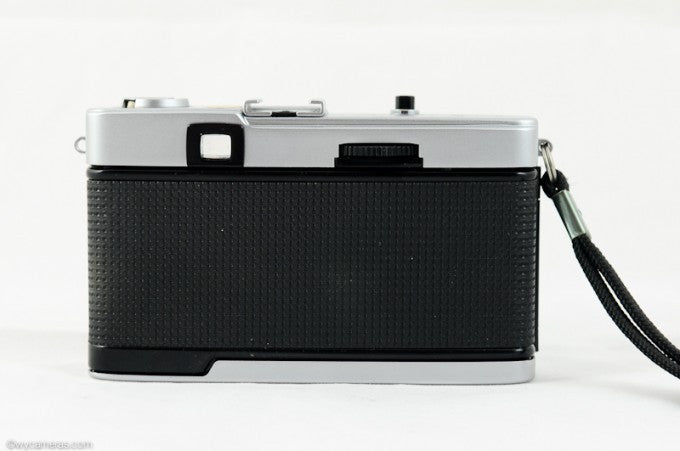Intro:
The Olympus Trip 35 is a bit of a favourite of ours…
Introduced in 1967, the Trip was sold in enormous numbers before being discontinued in 1984. and was named for its intended purpose – a compact camera for going on holidays. The popularity of the Trip 35 reached its peak during the 1970’s when even David Bailey used one.
We like it because of its sheer simplicity.
It’s ideal for someone who is just getting into photography and who isn’t used to manual settings or manual focusing. The great thing is, you can still have control over the aperture when you need to override the automatic mode, so you can still learn some of the basics while using it. You can set the aperture to either A, in which the camera will work in program mode, or you can set the aperture yourself, meaning it will be working in aperture priority mode. A downside is that there is no way of manually setting the shutter speed.
On top of its ease of use, it is tiny, lightweight and looks gorgeous.
There’s a full blog dedicated to photos taken with the Trip 35 . You should definitely take a look through it if you get chance.

A few good bits
It’s got a great lens a 40mm f/2.8 Zuiko lens with 4 coated elements is an ideal lens for almost any situation. The lens coatings stop reflections and flare which helps to increase sharpness and contrast.
It’s lightweight – Weighing in at a measly 390g, the Trip 35 is ideal for travelling, it won’t weigh you down like most cameras.
It’s well built – Despite the weight and size of the Trip 35, it’s actually pretty sturdy. It has a metal chassis, which is much stronger than the plastic used in more modern designs.
It is solar powered – The entire camera only needs power for the meter – which is powered by the solar cells around the lens, so no batteries required! No more sticky situations when you’re in the middle of nowhere on holiday and your battery dies.
It’s very easy to use – Anyone can use this camera – even grandma. Set the ISO of your film, stick it on A, tell it where to focus, and fire away. It’s as simple as that.
It’s small – With holidays & travel in mind, Olympus made the Trip 35 compact enough to fit in your pocket.
The best bit. – It’s cheap! We almost always have Trip 35’s in stock for just £35.00 (as of 09/12), including a thorough check-up, new light seals, and a free roll of film – be warned though, they go quick!
It’s idiot proof – When set to automatic, if the meter senses that the photo will come out under or over exposed then it won’t fire. It takes some getting used to, but it saves valuable exposures on film, so it is very useful in some situations. You can also adjust the aperture manually to override this setting.

A few bad bits
It does have its limitations – Despite how much we rave about the Trip 35, it does have its limitations… Not being able to change the shutter speed yourself could irritate some people, as lots of people do like full control over your settings, if this is the case then the Trip 35 definitely isn’t for you. It’s bigger brother, the 35RC would be better for this.
It isn’t very ergonomic – The size of the Trip 35 also has its disadvantages, it can get quite uncomfortable holding it after a while, especially if you have fat hands like us. The aperture ring is also extremely close to the camera body, making it quite awkward sometimes to change the aperture.
It’s got a fixed lens – Not an enormous down side, as most compacts don’t feature interchangeable lenses, and the Zuiko optics more than make up for it.
There are no focusing aids No rangefinder, no focusing screen, nothing. Careful scale focusing and a little luck will get you through.

The bottom line
Despite its shortcomings, this is possibly one of the best film compacts ever made. There’s a reason Olympus sold over ten million of them during the 70’s! It still has a strong cult following today. A proper camera!

